
Reform
For centuries up to the early 1800s, Buddhist meditation practices across Southeast Asia, and before that the Khmer Empire, appear to have been a creative mix of samatha-vipassanā techniques, with influences probably predating descriptions such as Mahayāna or Theravāda. This changed in the early 1800s with the formation of a new ordination line in Thailand, and then in the 1950s-60s with the challenge of the Burmese “dry insight” vipassanā method. The following are some of the key characters.
Mongkut’s “Reform”, 1833, Formation of the Thammayuttika Nikāya
Up to 1833 there had been a single unbroken ordination line in most of Southeast Asia, so well-established that when the ordination line failed in Ceylon, in the mid-18th century, a mission of senior Thai monks was invited to re-establish the lineage in 1753. Eighty years later, in 1833, Mongkut (1804-68), the second son of King Rama II, who had ordained as a monk in 1824 and was strongly influenced by Christian missionaries and Western scientific ideas, came to believe that the Thai Saṅgha had become corrupt and undisciplined with practices rooted in superstition. His response in 1833 was to establish a new ordination line, the Thammayuttika Nikāya, which translates as “those adhering strictly to monastic discipline”. The pre-existing tradition was then named “Mahānikai”, the “large order”, to distinguish it from the new Thammayut sect. Wat Bovorn in Bangkok was later established as the headquarters of the Thammayut sect, whilst Wat Mahāthat became the headquarters of the Mahānikāya. A key factor in these historical events was the death in 1823, one year before Mongkut ordained, of the highly revered monk Suk Kai Theuan, spiritual mentor of Mongkut’s grandfather and father, Kings Rama I and II, and a leading figure in the age old Yogāvacara lineage. This left existing practices vulnerable to the criticisms noted above, alongside Mongkut’s belief that the path to Nibbāna was no longer open, but that merit could still be made by reviving at least the outward forms of the earliest Buddhist traditions in the framework of a more disciplined Saṅgha.
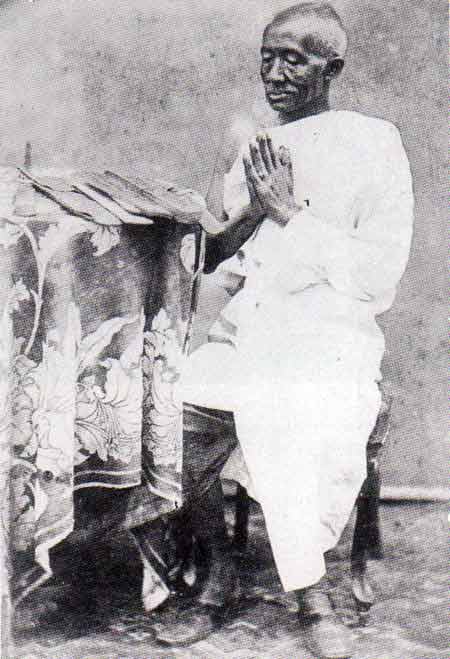
In retrospect it seems extraordinary that not only was Mongkut allowed to form a new sect that would inevitably lead to rivalries and tensions in the larger Buddhist Saṅgha, but that the new sect adopted a radically changed ordination ritual. The existing aspiration to end suffering and attain Nibbāna, was replaced by the wording of simply, “going forth”.
The exact changes were, from the previous Mahānikāya,
“Sabbadukkha, nissaraṇa, nibbāna, sacchikaranatthāya, etaṃ kāsāvaṃ datvā pabbājetha maṃ bhante, anukampaṃ upādāya”
(For the realization of Nibbāna, the deliverence from all sorrow may you, Venerable Sir, accept this yellow robe and grant me the initiation, out of compassion.)
To Thammayut,
“Esāhaṃ bhante, sucira parinibbutaṃ pi taṃ bhagavantaṃ saranaṃ gacchāmi, dhammañca bhikkhu-sanghañca. Labheyyāhaṃ bhante, tassa bhagavato, dhamma vinaye pabbajjaṃ”
(Venerable Sir, I go for refuge to the Lord - though he long ago attained total Nibbāna - together with the Dhamma and the Bhikkhu Saṅgha. Venerable Sir, may I obtain the Going Forth in the Dhamma-Vinaya of the Lord.)
After his brother Rama III died, Mongkut disrobed and became Rama IV in 1851 (of “King and I” fame). His son later became Abbot of Wat Bovorn and continued the modernisation/Westernisation of Buddhism with courses of study and controlled hierarchies, culminating in the Saṅgha Act of 1941 aiming at a uniform and reformed saṅgha.
❖ 1870-1949 Acaan Mun
Mun was born two years after Mongkut died, in Ubonratchathani, North-East Thailand, of Lao descent. He was a pupil of Acaan Sao (1861-1941) who taught him the “Bu-ddho” meditation practice.
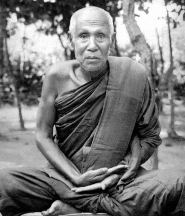
Ajahn Sao ~ 1930
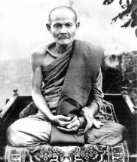
Ajahn Mun ~ 1927
He ordained in the Thammayut order, and later became the figure-head of the “forest tradition”, with his main pupils Acaan Thate (1902-94) and Acaan Maha Bua (1913-2011) later becoming highly influential in their own right. Through his own practice he came to believe the Path was not lost.
❖ 1884-1959 Luang Por Sodh
Also known as Phramongkolthepmuni, Luang Por Sodh, born in Suphanburi 100km west of Bangkok, was a contemporary for many years of Acaan Mun.
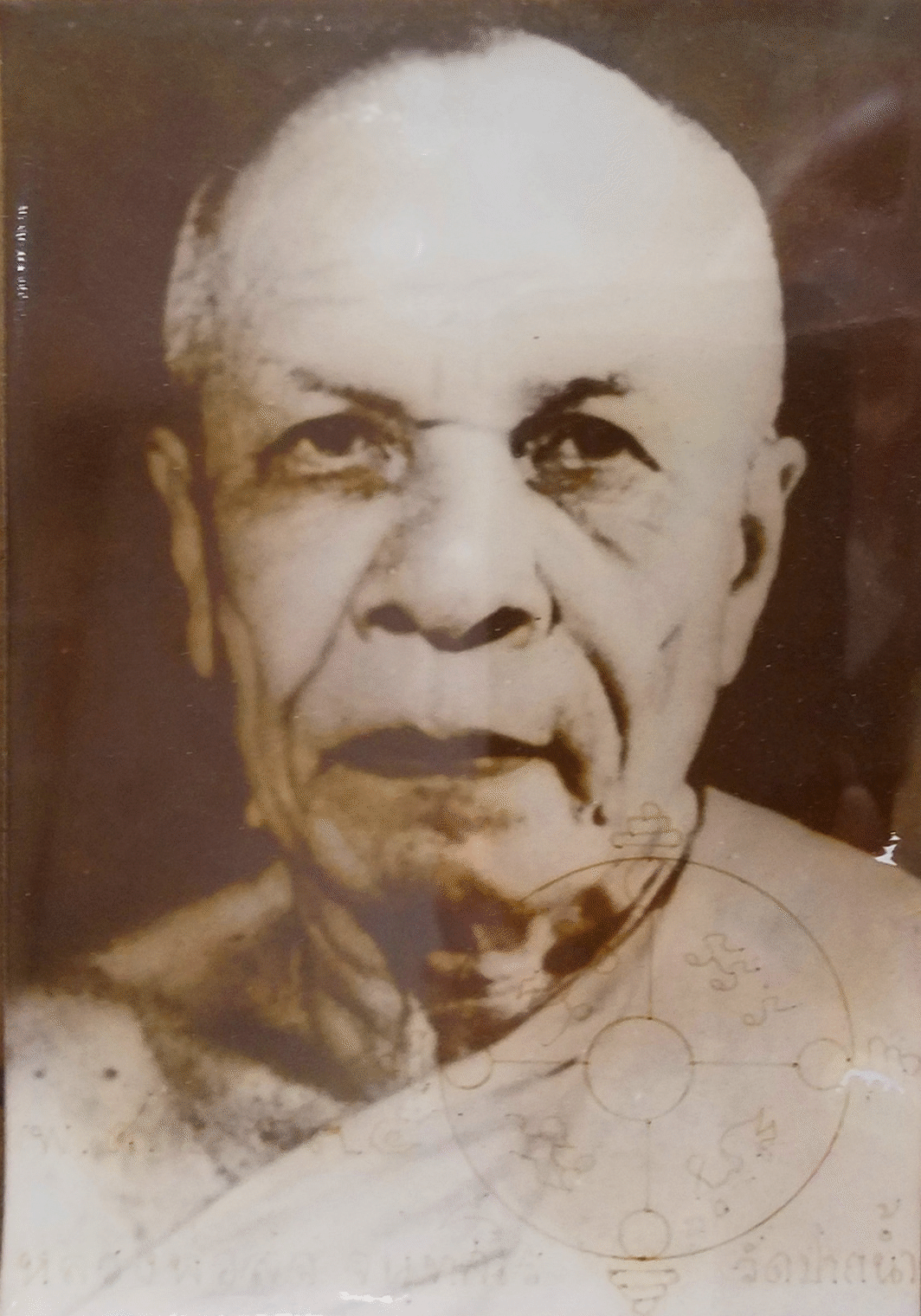
Luang Por Sodh ~1950
His method develops a highly concentrated state experienced as a central and deep crystal sphere as a way to the inner refined Dhammakāya body. Although the term Dhammakāya has come to be the defining term for his lineage of practice, it is a term already familiar in other Buddhist traditions, including the Tibetan, meaning literally dhamma body in Pāli, or dharmakaya, dharma body in Mahāyana sanskrit.
The identifying feature of Dhammakāya meditation is the meditator's attention towards the centre of the body two finger breadths above the navel. The promoters of this approach say this is the same point as the end-point of the deepest breath in mindfulness of breathing meditation (Ānāpānasati). A similar technique is described in an obscure 18th century Sinhalese meditation manual that was translated into English as "Manual of a Mystic". This practice was probably introduced into Sri Lanka by Thai monks during the Buddhist revival in Sri Lanka in the mid-eighteenth century, and taught to forest dwelling monks of the Asgiriya Vihāra fraternity in the Kandyan Kingdom. It is likely that Luang Por Sodh was influenced by such texts, or traces of such practices already existing, although his followers believe that knowledge of Dhammakāya meditation was lost 500 years after the Buddha entered Parinibbāna, until rediscovered by Luang Por Sodh.
From 1916 onwards, Dhammakāya meditation became associated with his home temple of Wat Paknam in Bangkok, and Luang Por Sodh himself was renowned for psychic powers, and many amulets have been made in his name. In 1970, 11 years after his death, his most accomplished meditation pupil, a nun Khonnokyoong along with her lay and monk followers, established Wat Dhammakāya to continue the teaching – which became hugely popular with Thai middle and educated classes. but by the time of writing has become the focus of accusations of corruption.
❖ 1904-82 Mahāsi Sayadaw
Mahāsi Sayadaw, born in upper Burma, was a pupil of Mingun Sayadaw, from whom he learned vipassanā meditation. Based on this, and his understanding of the Satipathāna Sutta, he formulated his own style of practice, which in comparison to the more traditional samatha-vippassanā tradition became known as the sukha-vipassaka or “dry insight” method.
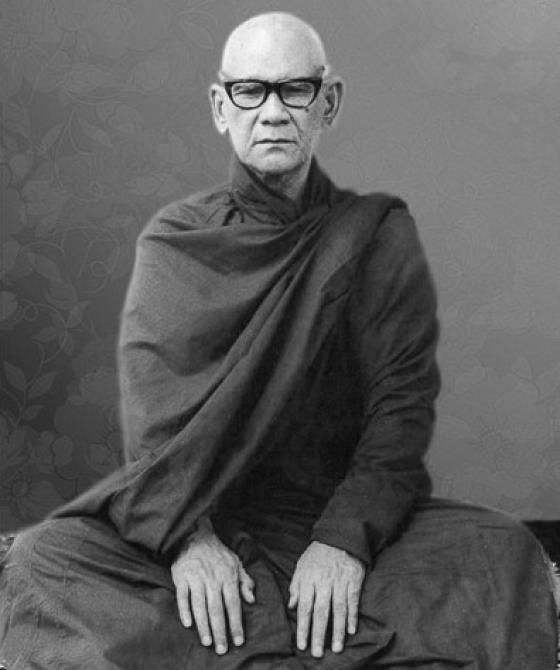
Mahāsi Sayadaw
Mahāsi Sayadaw’s “dry” vipassanā method of meditation had an enormous influence on Buddhist meditation practices from the 1940s onwards, first in Burma, then extending to SouthEast Asia, and worldwide. In this method it was claimed that samatha meditation, in particular the development of jhānic absorption, as a grounding for insight or vipassanā, is not necessary (although the practice does have a samatha component in developing concentration to the level immediately preceding jhāna, access concentration or upacāra samādhi. It was claimed that diligent practice would lead to stream-entry, the Sotāpanna path, in one month. After establishing a large following in Burma, Mahāsi Sayadaw toured Thailand in 1951, and became even more influential when Burma hosted the 6th Buddhist Council in 1954/5. From the 1950s onwards Burmese vipassanā was so highly promoted in Thailand that much of the age old samatha and jhāna traditional practices were relegated to effectively suppressed esoteric roles. In 1979-80, Mahāsi Sayadaw and several of his senior teachers toured Europe and held a retreat in Oxford in 1979.
Mid-1950s New Burmese Vipassanā comes to Thailand
The dry vipassanā method was introduced to Thailand by Phra Phimolathan who was a pupil of Mahasi Sayadaw, when he was Ecclesiastical Minister of the Interior and Abbot of Wat Mahathat (seat of the Mahānikaya). This was presented as a “reform” to replace existing Mahānikaya samatha-vipassanā practices. The context was a fierce rivalry between the Mahānikay and Thammayut sects in the years following the death of Acaan Mun, and particularly between Phra Phimolatham (Mahānikay) and Somdet Phra Mahāwirawong (Thammayut). Thai politics were also a factor. From 1957-63 Thailand was under military rule headed by Field-Marshal Sarit Thanarat, and it suited Sarit and the Monarchy to favour the Thammayut sect and its associations to the forest tradition founded by Acaan Mun. Against this background, both sects were vying for meditational authority and ecclesiastical posts under a new structure of an Ecclesiastical Assembly with a Supreme Patriarch appointed by the King.
Phra Phimolathan instituted a national campaign to promote the Burmese vipassanā method in Thailand, but Sarit and his military government construed the popularity of the Mahānikay vipassanā meditation programme as a political and subversive threat. Phra Phimolathan was disrobed and incarcerated in 1955, and the previous democratic 1941 Sangha Act was eventually replaced by the authoritarian Sangha Act of 1962, which gave power to the Supreme Patriarch and his advisors in the Council of Elders (Mahātherasamakhom). The position of Supreme Patriarch was then taken by Phimolatham’s Thammayut rival, Somdet Phra Mahāwirawong.
However, as a result of the success of Phimolathan’s campaign, and his successor Phra Thepsiddhimuni, by this time many monasteries around the country had become satellite meditation “branches” of Wat Mahathat, the driving force of which was to undermine samatha meditation practices and to replace them by the “dry” vipassanā method from Burma. From the mid-1950s into the 1960s, for example, Thai monks wishing to travel to other countries were required to pass “tests” to prove they had attained a certain level in the vipassanā method, even if they were already experienced in samatha-vipassanā meditation.
The Burmese vipassanā method became the public face of Buddhist meditation in Thailand through open lectures delivered by the Buddhist University of Wat Mahathat during the 1970s, open to both Thais and foreigners, both monks and lay. The aim was to present the new vipassanā method as more rational and scientific than the previous samatha-vipassanā method, which was often portrayed as corrupt or tainted by “magical” practices, as well as with a dependence on developing jhānic practices which were considered unnecessary and a blind alley by the Burmese vipassanā school. (On the other hand, some experienced samatha-vipassanā teachers were of the opinion that the “dry” vipassanā method had attracted, and been largely formed by, “failed” samatha-vipassanā meditators.)
As Tambiah writes,
“The Thammayut brand of central Thai Buddhism was to be the criterion of pure Buddhism, and regional traditions of Buddhist practice, worship, and identity were to be obliterated in favour of a Bangkok orthodoxy and of central Thai language as against variant languages, such as the Tai Yuan of the North and its associated script”
(1984: 162. The Buddhist Saints of the Forest and the Cult of Amulets: A Study in Charisma, Hagiography, Sectarianism, and Millennial Buddhism. Cambridge: Cambridge University Press).

This work is licensed under a Creative Commons Attribution.
The majority of images on this website are original to the site. We believe, following exhaustive checks, that all others are open-source, but if any visitor thinks otherwise do please contact us at info@itipiso.org
